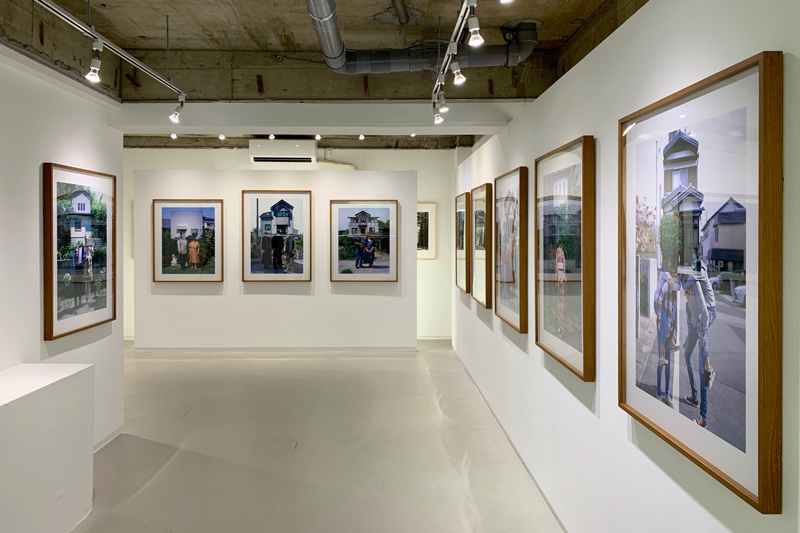
Topophilia: Japanese Houses, KANA KAWANISHI PHOTOGRAPHY, Tokyo
2020
lambda print
2002 - 2019
74 x 91 (cm), 74 x 101 (cm)
gelatin silver print, photo collage
1997
57.5 x 71 (cm)
展覧会
トポフィリア(場所愛):ジャパニーズ・ハウス, KANA KAWANISHI PHOTOGRAPHY 東京
2020年
ラムダプリント
2002 - 2019年
74 x 91 (cm), 74 x 101 (cm)
ゼラチンシルバープリント、フォトコラージュ
1997年
57.5 x 71 (cm)
Courtesy KANA KAWANISHI GALLERY
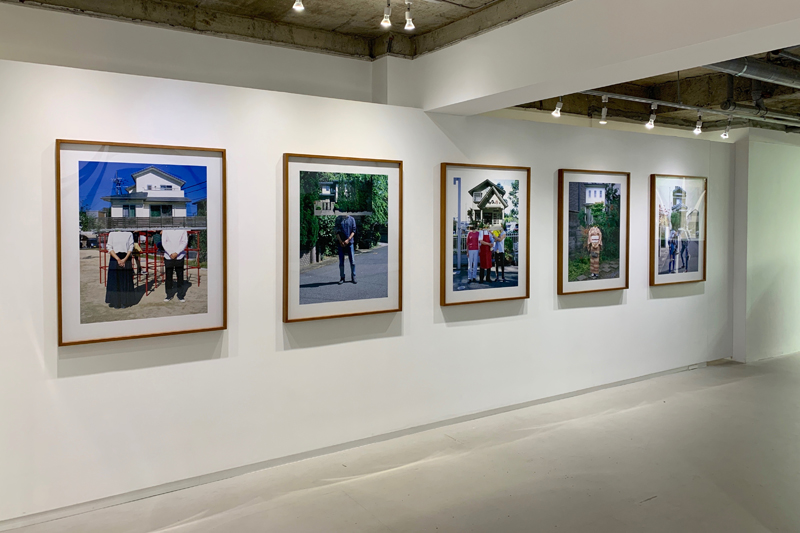
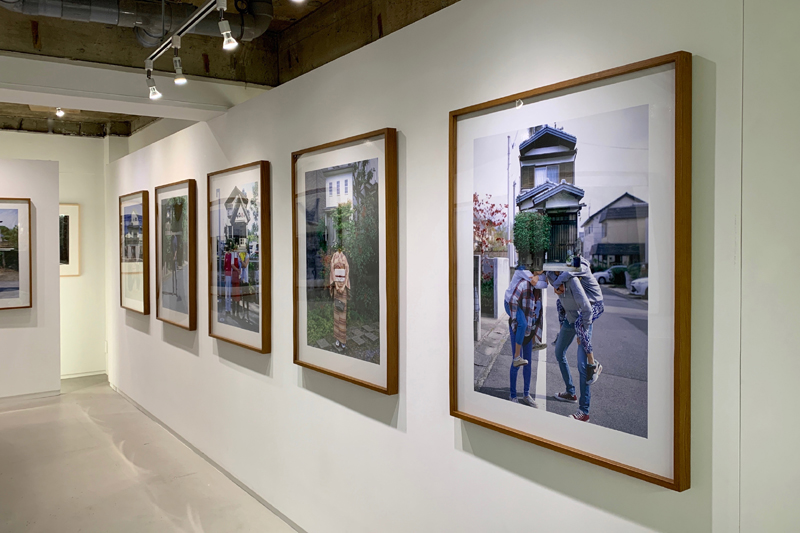
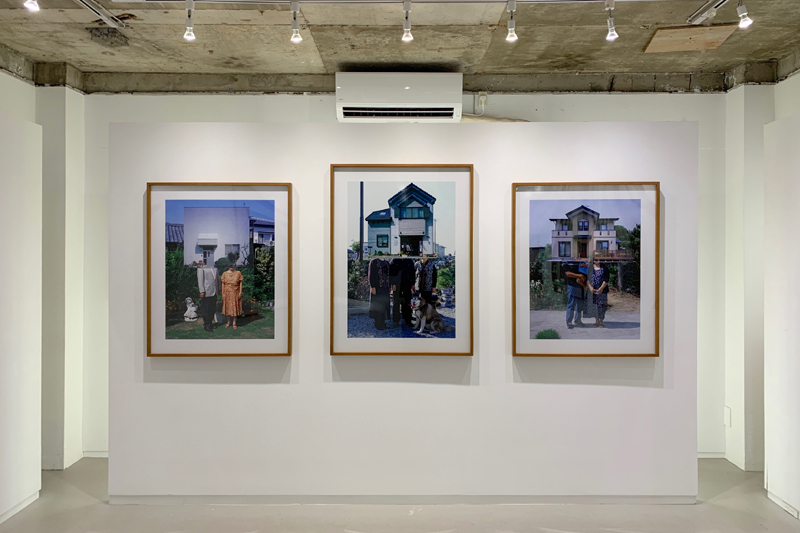

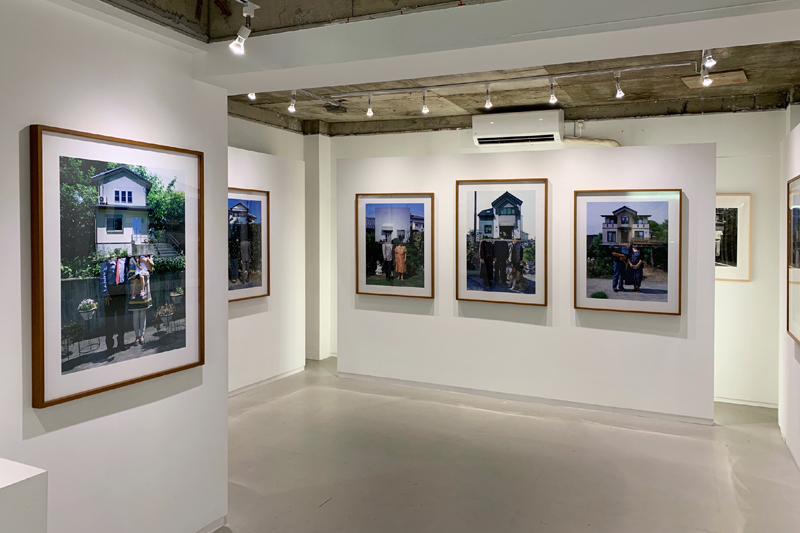
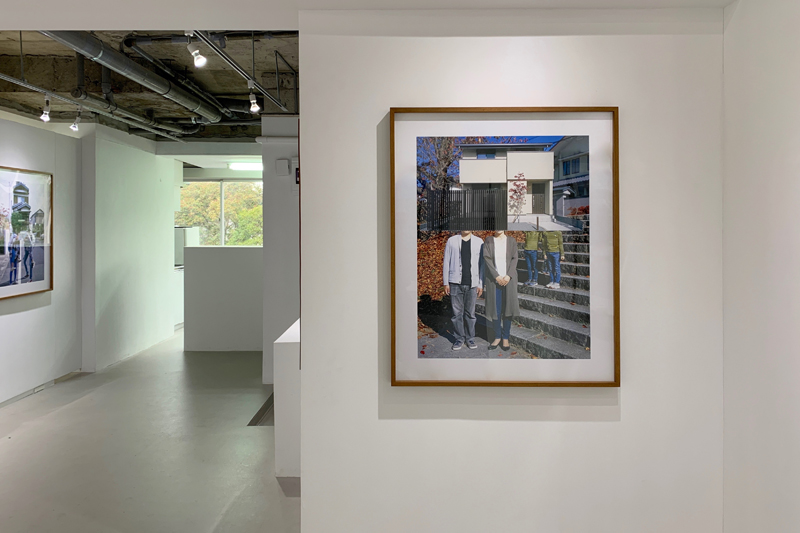

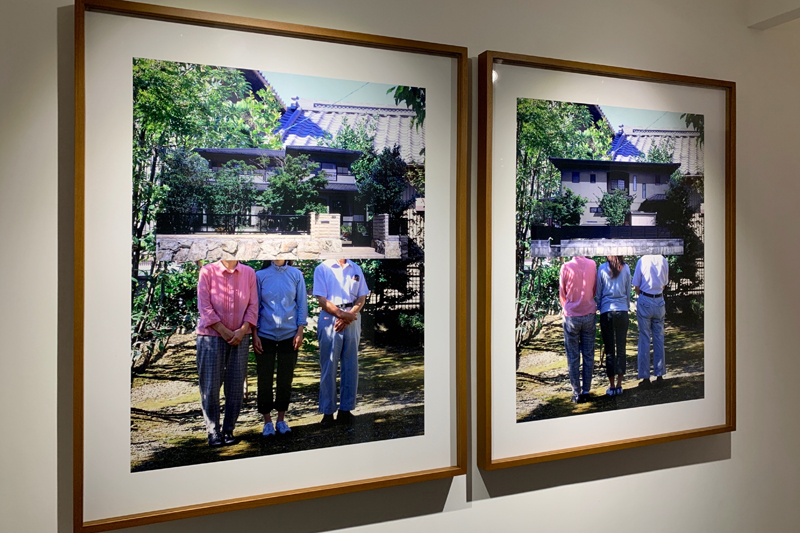
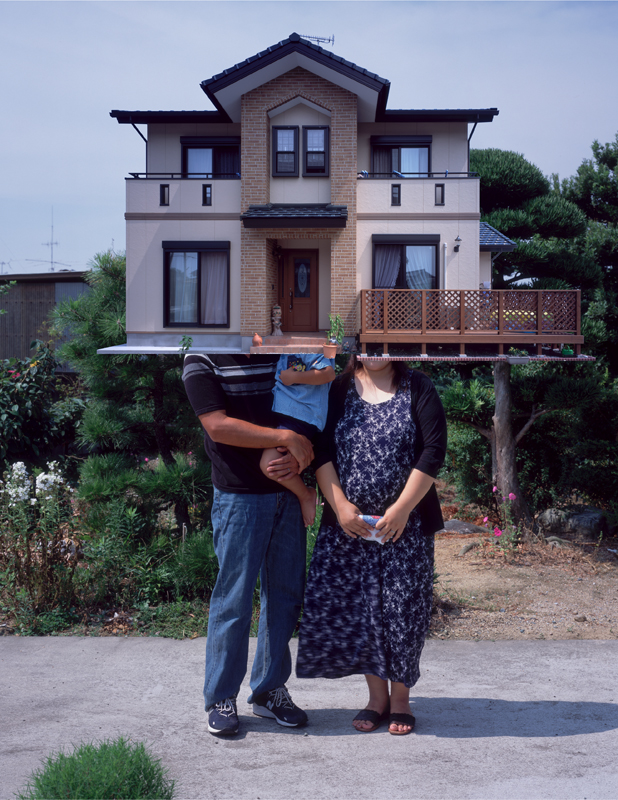
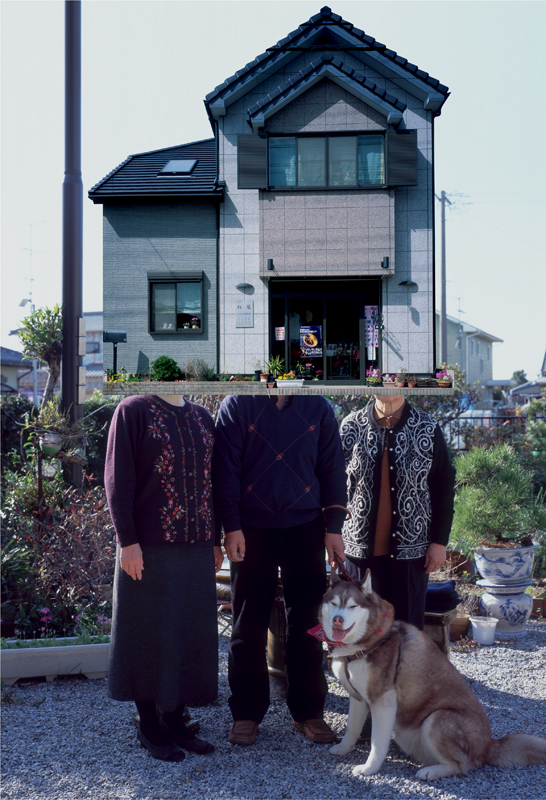
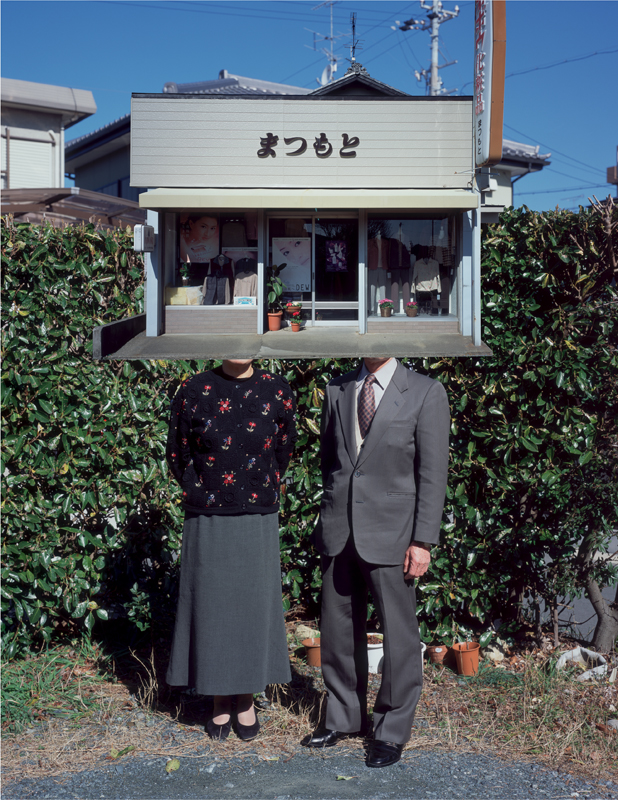
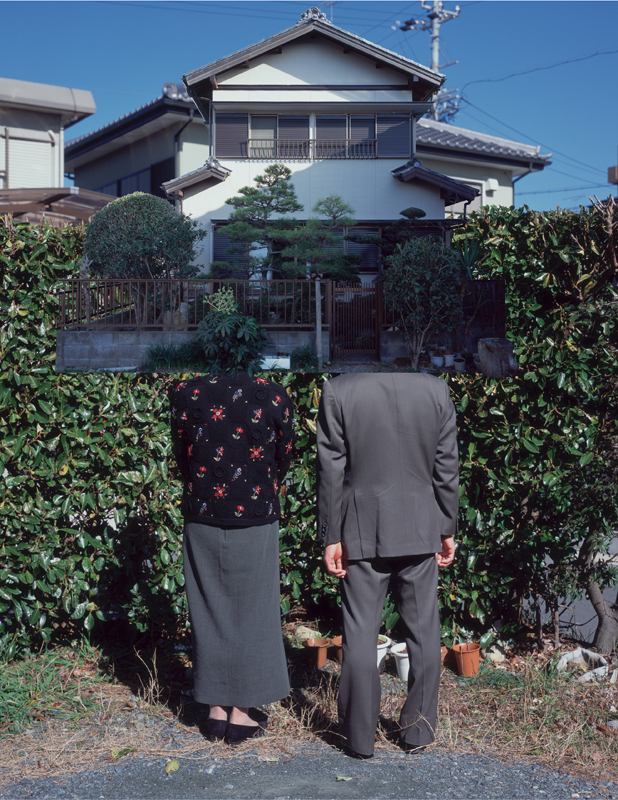
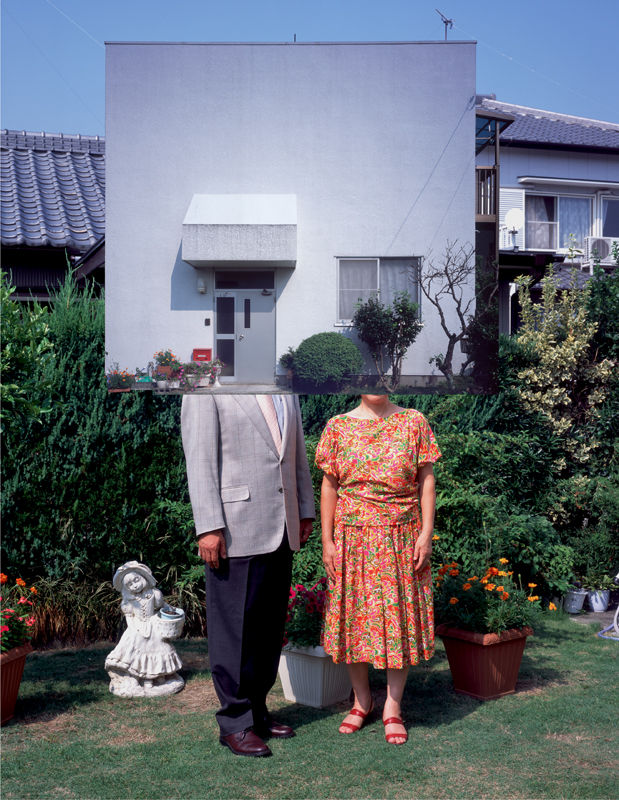
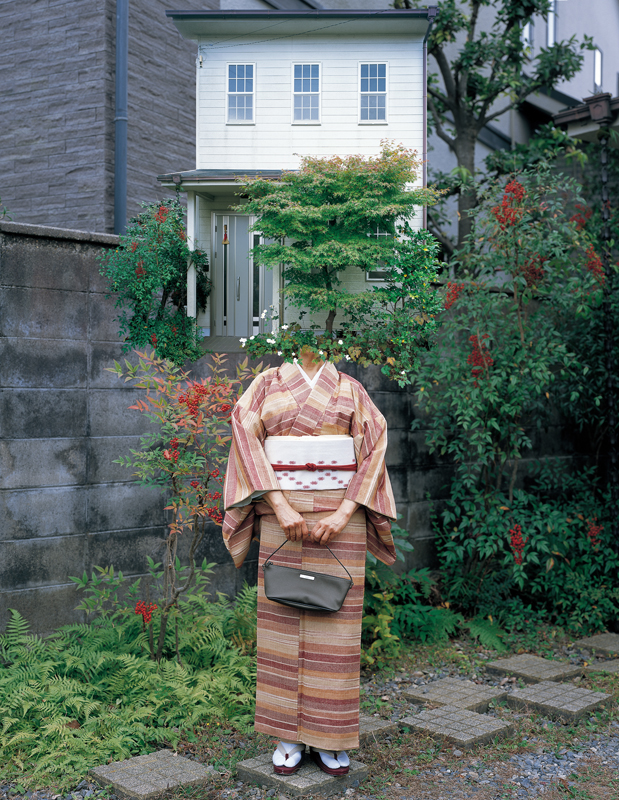
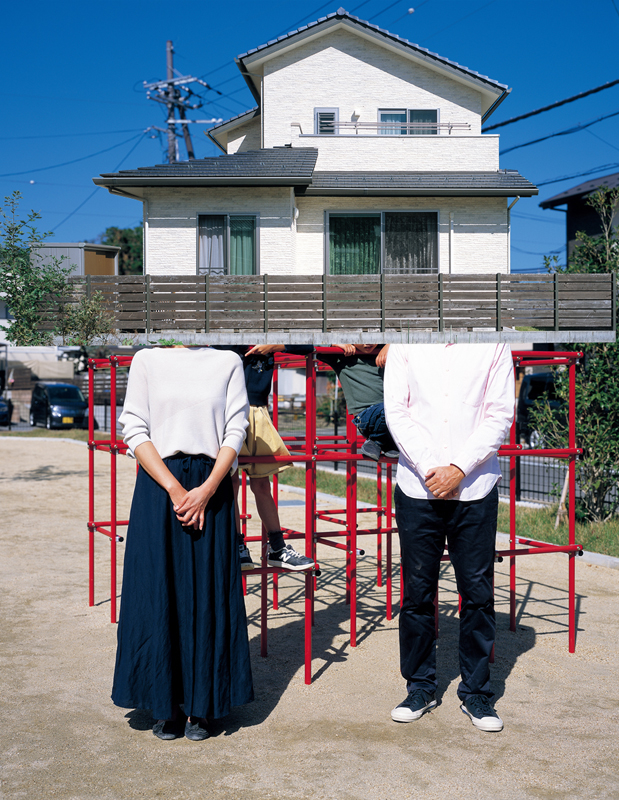
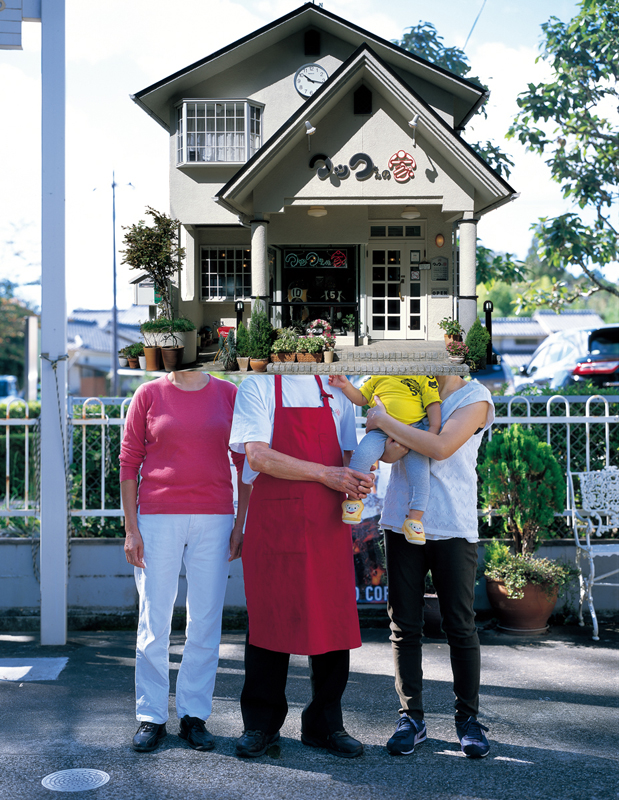
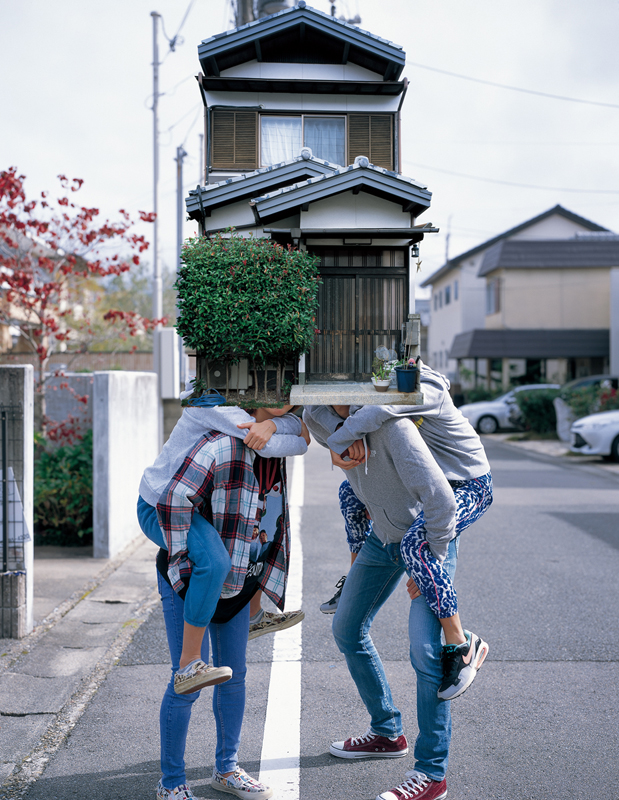

'On Happiness; Contemporary Japanese Photography'
Tokyo Metropolitan Museum of Photography, Tokyo, Japan, 2003
lambda print
2002 - 2003
74 x 91 (cm), 74 x 101 (cm)
gelatin silver print, photo collage
1997
57.5 x 71 (cm)
展覧会
「幸福論」東京都写真美術館 2003年
ラムダプリント
2002 - 2003年
74 x 91 (cm), 74 x 101 (cm)
ゼラチンシルバープリント、フォトコラージュ
1997年
57.5 x 71 (cm)




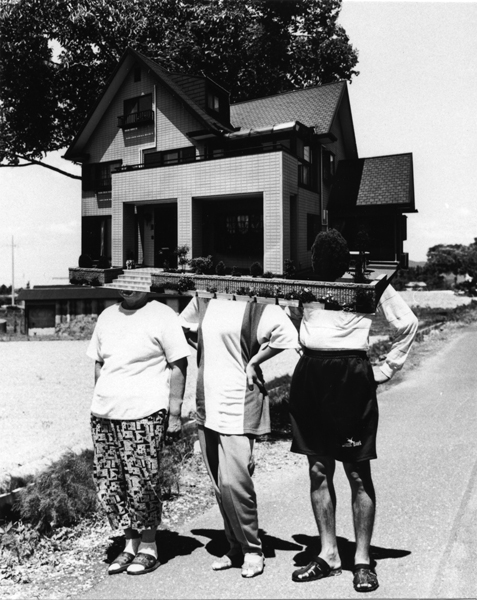
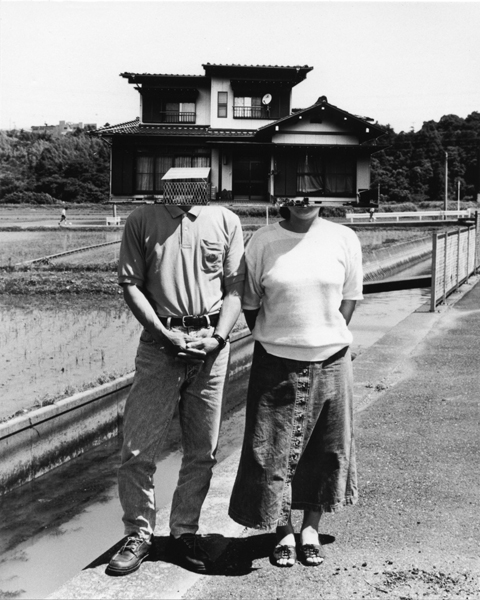
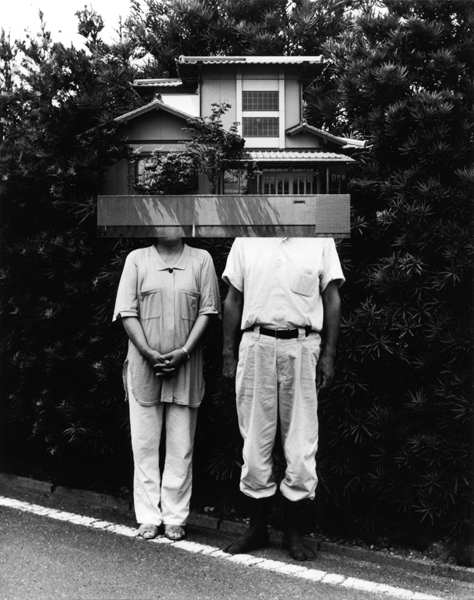

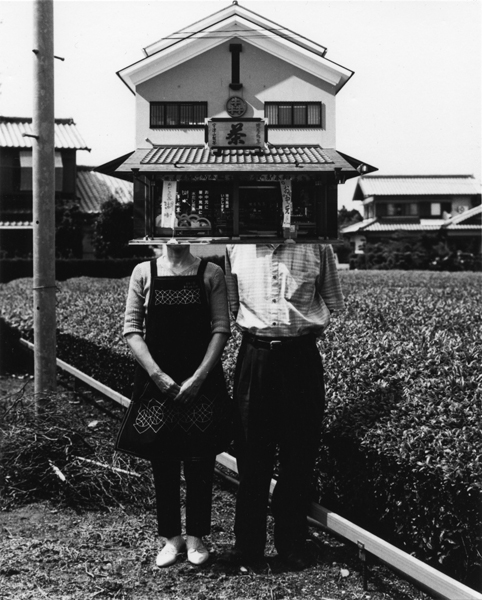
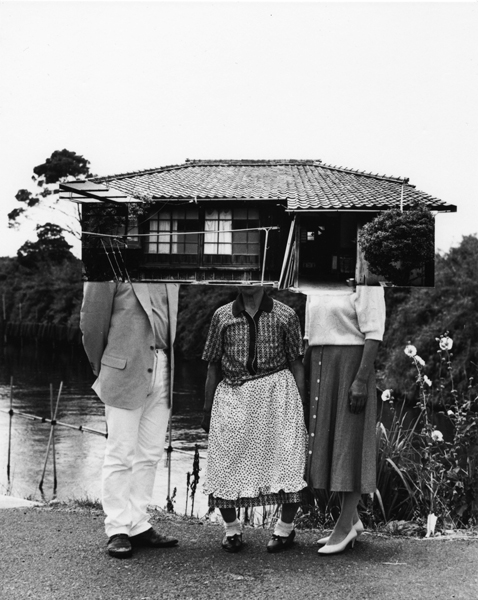
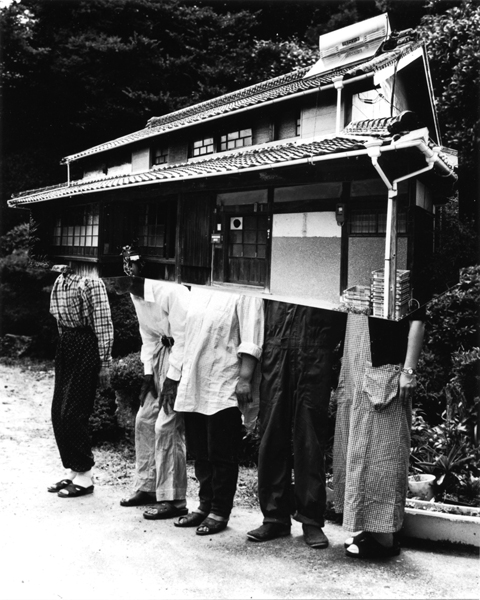
日本では、「ウチの人」「ウチの者」と言うように、ウチとは家屋(建築)だけを示すのではなく、その家屋に住む人=家族も同時に意味する。1997年の春、 私の家族が地元の大工によって建てられた新しい家に引っ越した際に、日本人と家との関係について興味をもち始めた。ジャパニーズ・ハウス(1997年以降 継続)は家族のアイデンティティーについての作品である。作品は複数の日本の家族の肖像とそれらの家族によって建てられた住宅のモンタージュによって構成 され、完成されたイメージは日本人の持ち家にたいする強い執着と願望を表現する。背景から切り取られた家の写真は、家族の頭部に張り付けられ、仮面となり 家族成員の個々のアイデンティティーを隠蔽するとともに、家族全体の統一したアイデンティティーとなる。つまり家は家族の顔になる。家屋と家族の肖像とが 結合してできたシュールレアルなイメージは、「アントロポモルフィズム」(擬人観)となり、建築と人体との類似性を探る。
フォトコラージュ/フォトモンタージュは、バウハウスやロシア構成主義、シュールレアリズムの作家達によって主観的で複雑なイメージの構成を目的として試みられた技法であった。ジャパニーズ・ハウスは技法的にはフォトコラージュ/フォトモンタージュであるが、内容的には戦前ドイツの肖像写真家であるアウグス ト・ザンダーと、戦後ドイツの写真家であるベルント&ヒラ・ベッヒャーのタイポロジー(類型学)を意識した作品である。したがって「ザンダー(人)+ベッ ヒャー(建物)」と言える。最初のジャパニーズ・ハウスを白黒フィルムで撮り始めたのも、ザンダーとベッヒャー夫妻の白黒写真による客観的なタイポロジー (類型学)に関心を寄せていたからだ。実際ザンダーとベッヒャー夫妻の写真を流用してモンタージュした習作を前もって試み、人と建物の組み合わせの効果を テストした。
丁度その頃、写真技法はウェット(フィルム)からドライ(デジタル)へと急速に移り変わろうとしていた。1997年の初夏にアメリカのボストンから一旦帰国 し、白黒フィルムと銀塩プリントの最後の作品になるかもしれないという思いで、実家のある浜松市西部で撮影を始めた。当時私が暮らしていたアメリカの郊外 では、住宅はセカンドハウスでなければ、施主が注文住宅として建てたりするものではなく、購入後に外装を自分の好みのカラフルなピンク色や黄色で塗装したり、装飾を施したりする程度であり、原型はデベロッパーによって開発され建設された同一の建て売り住宅である。当時私が住んでいたアメリカと日本の郊外住宅の違いに気づき、より施主の嗜好が住宅の設計に反映され、洋風/和風/和洋折衷といった様式のバリーション豊富な日本はこのシリーズに好都合であると考 えた。なにしろ日本人は家と場所への執着が強い。撮影は実家から始まり、親類縁者、私の家族や友人と知人、店舗付き住宅から寺院まで、幅広い協力者によって、家と家族が結合したバリエーション豊かなタイポロジー(類型学)となった。
白黒バージョンは、白黒フィルムと銀塩プリントによる豊富な階調と柔らかい調子、家の輪郭は背景からナイフで丁寧に切り抜かれて、家族写真の顔面上に家のプ リントを直接貼付けたコラージュが大胆である。撮影は家と家族を正面のアングルから狙っただけでなく、斜め横から撮影することも試みて、正面性だけでなく 奥行きも感じさせた。これはカラーバージョンになってからの背後からの撮影へと繋がるものであった。
2002年に京都で暮らし始めてから、私はカラーでジャパニーズ・ハウスを再開した。技法的にはドライ(デジタル)に移行させ、画像データからのデジタル銀塩出力 を用いてプリントを大判化させた。白黒の濃淡によってクラシカルで親密な印象を感じさせる1997年バージョンとは対照的に、デジタルのカラーバージョン は色彩の鮮やかさと即物的な細部の描写、大判化という点でより現代的である。2002年の時点では、白黒の時と同じく撮影地は浜松市西部でカラー化し直すように始めたが、最終的には東京にも撮影場所を広げ、近年は京都市や大津市といった現在の私の居住地周辺で撮影している。浜松市のような昔ながらの田舎の家が多く残る、大都市から離れた地方都市と比べ、京都市で最近撮影された住宅と住人は都会的に洗練されて見える。家は家族を映し出すだけでなく、建てられた土地の自然的、文化的環境も反映している。実際、家族の背景として写っている景観は、その家の庭や周囲の環境であり、ジャパニーズ・ハウスによって私 は、人と建築と周辺環境の関係性を探る。
In Japan, a family member is commonly referred to as “a person in one's house,” and the word “house” represents not only a residence (architecture) but also a group of residents = a family. In the spring of 1997, I became interested in the relationship between Japanese people and their houses when my family moved to our new house built by local carpenters. Japanese Houses (1997-) is a series of works commenting on family identity. This series is composed of multiple montages of Japanese family portraits and photographs of houses built for them, and the finished images represent the strong attachment and aspiration of the models towards their own houses. Images of houses cut out from backgrounds and placed on their heads become masks to conceal the identities of each family member while providing a unified identity for the entire family. In other words, a house can be a family's face. The surreal images created by combining portraits of houses and families become “anthropomorphism” to explore similarities between architecture and the human body.
Photo-collage and photo-montage were techniques to create subjective and complex images attempted by Bauhaus, Russian constructivists, and surrealist artists. While the Japanese Houses is a series of photo-collages/photo-montage in terms of its technique, its content is created with the awareness of typology presented by August Sander, the German portrait photographer in the prewar era, and Bernd & Hilla Becher, the German photographers in the post-war era. Thus, this work is composed of “Sander (people) + Becher (buildings).” The reason why I started shooting the Japanese Houses using monochrome films was my interest in the objective typology in monochrome photographs by Sander and the Bechers. In fact, I attempted to create a photo-montage study using photographs by Sander and the Bechers beforehand to test combinations of people and buildings for their effects.
At that time, a common photographic technique was changing rapidly from a wet (film) technique to a dry (digital) one. In the early summer of 1997, I returned from Boston, the United States, and started shooting in western Hamamatsu, where my parents' house was located, with the thought that these might be the last works by monochrome films and silver-halide prints. In the suburbs of the United States where I lived back then, house owners wouldn't build their residences as custom ones unless they were meant to be second houses. What the owners could do was only paint exterior walls in yellow, pink, or colors they liked, or add some decorations and those were built-for-sale houses originally developed and built with same designs by certain developers. Noticing the differences between suburban housing in Japan and that in the United States that I lived in that time, I considered Japan was a convenient location for this series since owners’ preferences are reflected better on their house designs and Japanese houses have a rich variety of styles such as Western, Japanese, and Japanese-Western. Above all, Japanese people have a firm attachment to a house and a place. Since the shooting started off at my parents' house, the series has acquired diverse typology that combines houses and families thanks to a wide range of supporters: my relatives, family, friends, acquaintances, a house furnished with a store, and a temple.
Monochrome works of the series feature rich gradation and soft tone achieved by a monochrome film and a silver-halide print, houses' outlines carefully cut out from the background with a knife, and bold collage work in which prints of houses directly stuck on the faces in family portraits. In addition to the aim at the house and family from the front angle, I also attempted shooting from an oblique side to create not only frontality but also depth in the works. This attempt led to shooting from behind in color works of the series.
When I started living in Kyoto in 2002, I restarted Japanese Houses with color photography. I technically shifted to the dry (digital) technique, and enlarged prints using digital silver-halide output with image data. In contrast to the works from 1997, whose shades of black and white create a classical and intimate impression, the digital color prints are more up-to-date in terms of vividness of colors, realistic depiction of details, and the enlarged format. Although I started the shooting of color works in 2002 in western Hamamatsu as in that of monochrome works, the range of shooting locations ended up expanding to Tokyo. In recent years, I have photographed works in Kyoto and Otsu close to where I currently live. Compared to Hamamatsu, one of provincial towns far apart from a metropolis where many traditional country-style houses are, the houses and residents recently photographed in Kyoto are seemingly urbanized and sophisticated. Houses reflect not only families but also the natural and cultural environment of where they are built. In fact, sceneries that appear as the background behind families are gardens in the houses or their surrounding environment. I examine the relations among humans, architecture, and surrounding environment through Japanese Houses.